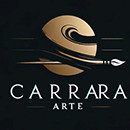To truly look (to save them in our visual memory) at the countless modulations of Roberto Tagliazucchi's sculpture means to understand first and foremost the intellectual anxiety that presides over them, the culture of the human, the most arduous and yet calibrated constructive determinations that govern his strong and significant plastic boldness. Stefano Lanzardo is right when he defines, in the title of his photographic investigation, the journey within Tagliazucchi's work as a sort of search for the imprints of an emotion. Indeed, these are emotions innate to his undeniable plastic skillfulness, capable of always making us participants, in a direct and tangible way, in the values he has identified in forms, chosen with patience and passion. We can also talk about a dynamic emotion, in the sense that our artist does not stop in the face of any difficulty that the material may present when it becomes the object of ideation, and then a prized tenant of space. When he felt the need to reconcile "with the outer world," Tagliazucchi placed the concept of "Harmony," as conceived by Dionysius of Halicarnassus, on the throne of his creative inspiration, that is, mental synthesis, and I would add, coordinated at every moment with a painful yet conscious technical criterion. Seeking harmony for Tagliazucchi is to recover a poetics of proportions in "his" measure, that is, suited to his sensitivity and his individual perception of "beauty," the closest and obviously the most difficult to eternalize. The primary reason for harmony for Tagliazucchi is clearly readable in the quick drawing (preparatory but immediately autonomous from the possible subsequent plastic outcome) when it presupposes a strong fidelity to intuition; it is even more readable in the path of his sculpting when it enters the dominant sphere of the concertation between softness and sought-after angles. His "effort" is - so it cannot not be - fiercely wanted and practiced, I would say inevitable in him and thrilling and therefore a preface to the realization project. And then Tagliazucchi never intends to attack or harm the material chosen for his messages: it is easy, in my opinion, to perceive the love with which he sculpts precisely because he makes evident, comprehensible, his program of formal conquests nobly and robustly lyrical. And here we must understand each other, even with his "aesthetic help" where he speaks of "nouveau romantisme", on his new, fierce, and permanent will, to fix and exalt the rhythmic forms through a rooted, inescapable "feeling of space." When he decides to delve into the secret room, into the privacy, of the plastic medium, Tagliazucchi knows in advance that he will derive from it - and will propose to us with legitimate and entirely approvable artist's pride - unprecedented, historical, human moments, strangers - precisely because children of the feeling of space - to codes, to dogmatic habits, to blocking norms. Take for example: when we find ourselves in front of his "Christ de Alleray" (1987) a new suggestion is inevitable, precisely because that image - so intensely and variously glorified by thousands of sculptors and painters of all times - arises from a subjective humanism, really intense, I would say also from a rich and courageous secular religiosity. For Tagliazucchi, there is no need to get lost in descriptions: better to choose the narrowness (which in him will become prairie) of essentiality, through which one avoids the detailed "circumstances" and instead captures, from an event then so exceptional as the Crucifixion, the deepest dramatics, between smothered cries and inscrutable exaltations. If we then look carefully at other works ("Dance", for example) we can realize Tagliazucchi's ability to innovate in the infinite, mined field of plastic balances: no longer just the flat horizontality or the absolute verticalities, but also the "laterality", which is poetry of the momentum, that is, of a vehement and elegant momentum, child of vigorous and responsible impulses. A true sculptor, Tagliazucchi, who has reached, with the rare but increasingly demanded ethic of responsibility, the ability to explore in the material, in the plastic medium, where there are unpredictable but substantial moments of harmonization, for example between hollows and luminosities, between planes and rhythms, between measure and spontaneity (see works like "Dreaming", "Nathalie", "Canapé", "David"), with the sacred approval of "Madame Poetry" and "Mademoiselle Imagination". Goodbye, and thank you very much, Master Tagliazucchi, sculptor of race, governor of new plastic figurations.
Ferruccio Battolini February 2001


